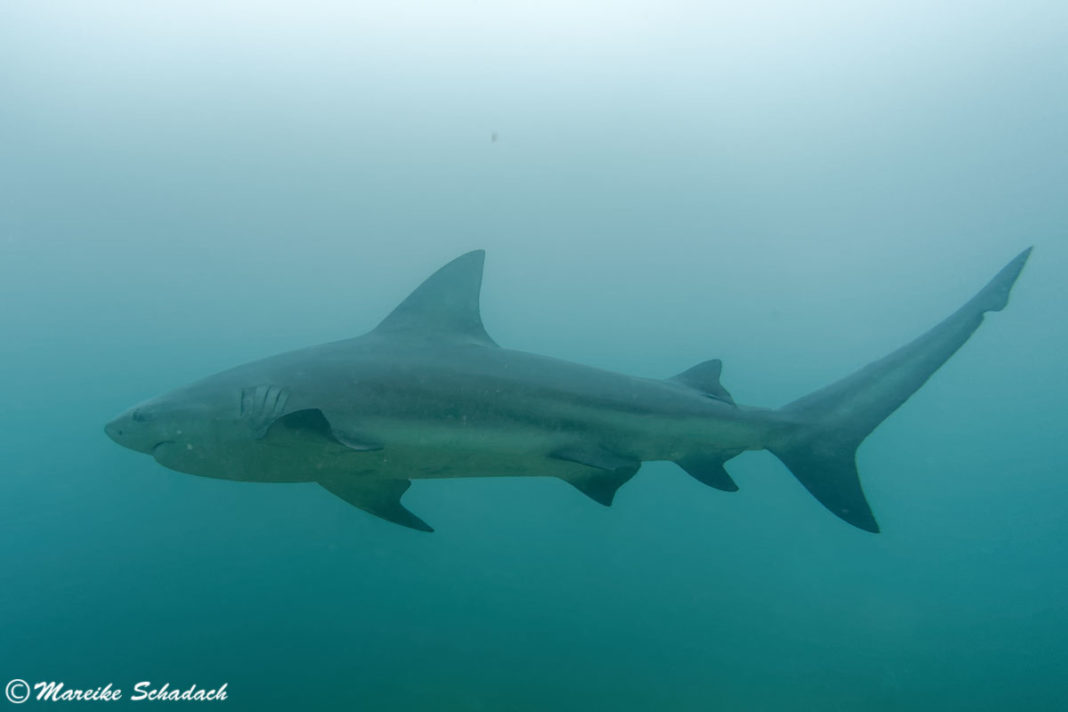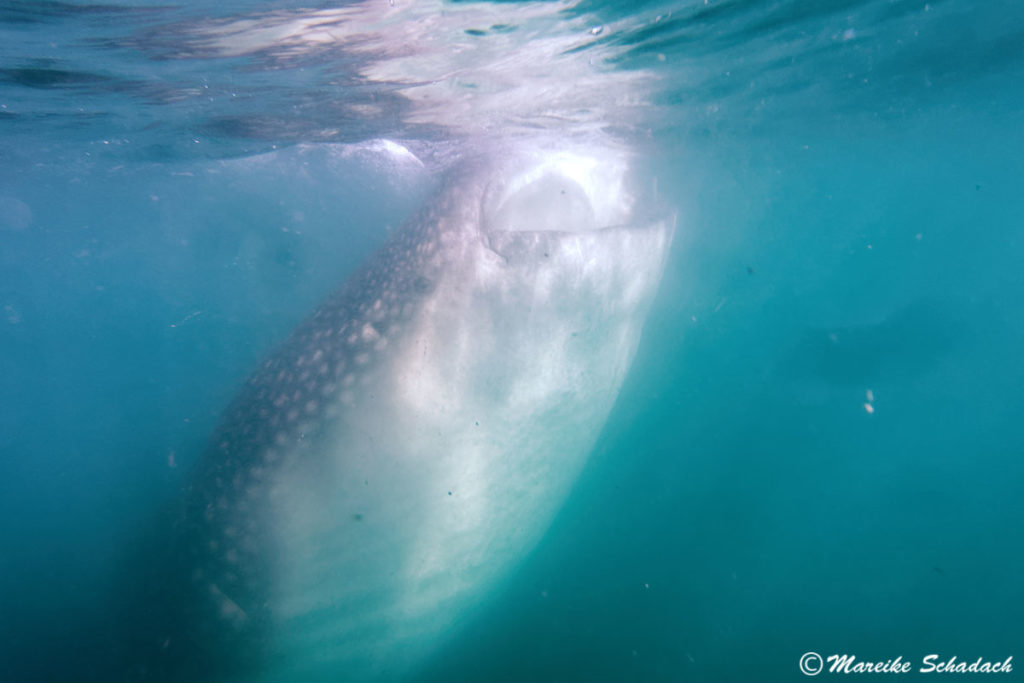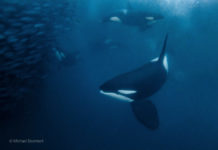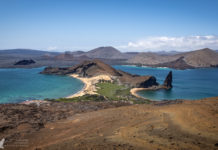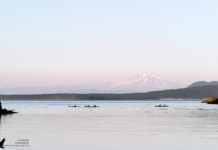Diving with bull sharks? Aren't they the ones that eat people too? When reading the description of the dive sites in Cabo Pulmo I suddenly shivered. I involuntarily thought of the movie "Jaws". As a teenager I loved that movie. And for many years it shaped my perception of sharks as bloodthirsty beasts. But the thought of bull sharks never left my mind. And so I began to read more about these animals and shark diving. Learn more about the bull sharks in Mexico and shark diving in Cabo Pulmo in my article. What do you need to know and what are general tips for diving with sharks?
Unassigned, unpaid advertising. The article contains affiliate links*.
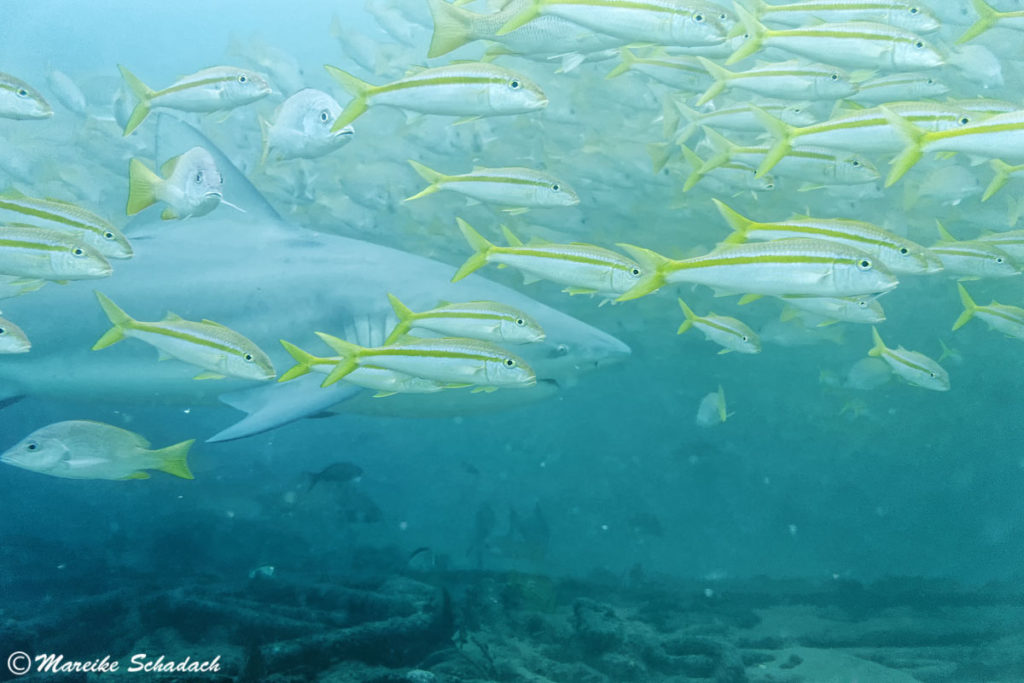
Content
Rendezvous with Bull Sharks
Dark Shadows and close Encounters at "El Vencedor
Shark Diving in Cabo Pulmo National Park, Mexico
Shark Diving - the Pros and Cons
Tips for your Shark Dive for more Safety
Bull Sharks - feared, hunted, protected and loved
So you can do something for Shark Protection yourself
Rendezvous with Bull Sharks
The plane from Los Angeles to San Cabo in Mexico is overbooked. Two volunteers are to be rewarded with no less than 900 dollars each for rebooking their flight for the following day. A tempting sum. But the time we can spend in Baja California Sur is already short anyway. And on top of that I have a very special date there.
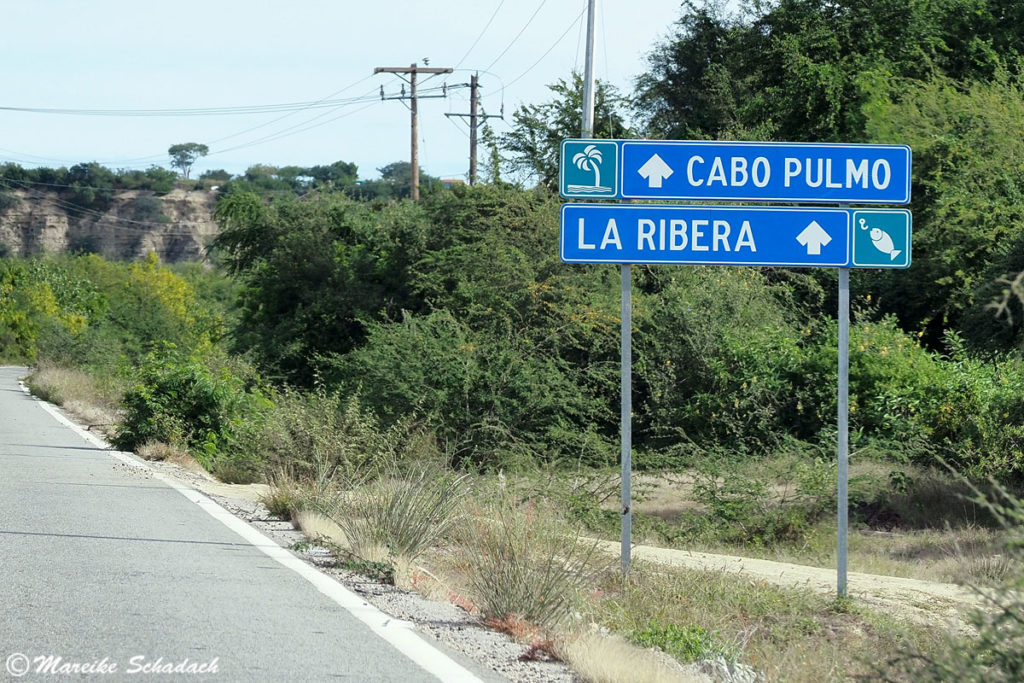
But when we arrive at the dive center we are disillusioned: The dive spot "El Vencedor" is closed. Because of conservation reasons, only 72 divers are allowed per week at the wreck. And this is THE spot to see bull sharks in Cabo Pulmo.
Not only at the wreck "El Vencedor", but also at all other dive spots in the national park, the number of divers is limited. Furthermore, the number of dive boats present at each spot is limited. Furthermore, time slots are assigned to the boats. For this reason, the planned dive destinations are only released by the National Park Administration before each trip. This has the advantage that you will never find crowded dive spots in Cabo Pulmo. The disadvantage, however, is that you only find out shortly before the dive if the desired dives will work out.
Leo, our guide from Cabo Pulmo Watersports, our fellow divers Farheen and her partner, and James and I get ready for our 2-tank dive. We do not know at this moment where we want to go. The bigger the surprise is soon after. "Do you want to go to the bull sharks?" Leo asks us with a grin. So "El Vencedor" was open after all and is now the destination for our second dive of the day.
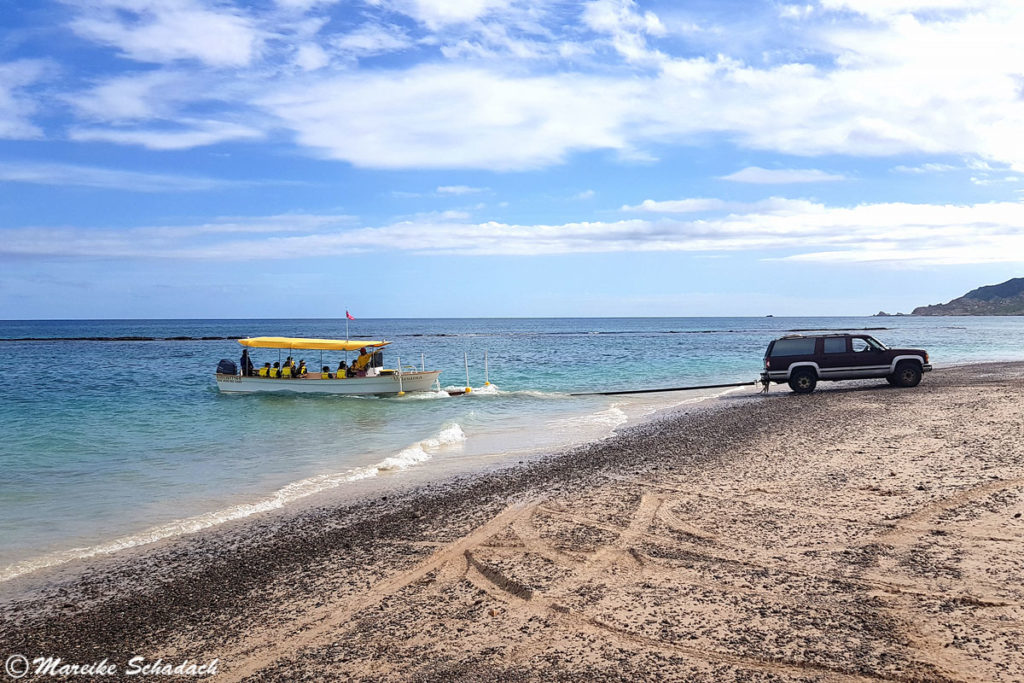
I can not believe our luck, I hope with all my heart that the bull sharks will show up.
Dark Shadows and close Encounters at "El Vencedor
Already while diving down to the wreck lying in about 13 meters depth, I see a dark shadow under me. It is quite big. At the sides two pectoral fins stand out. My heart is beating, and I notice how my senses are sharpened. They are actually there! The bull sharks of Cabo Pulmo!
Next to the wreck - not much is left - the bottom is sandy. We sit on the sandy bottom, keep calm, wait and watch. On our left, a shoal of yellow striped mullet is standing in the light current. The visibility is rather moderate with about 10 meters. But it doesn't take long until we can see the outline of the first shark in front of us. It continues to approach, only to disappear from view again immediately afterwards. I look around carefully so that I don't miss anything. The idea that a bull shark could approach unnoticed from behind gives me a slightly queasy feeling in my stomach.
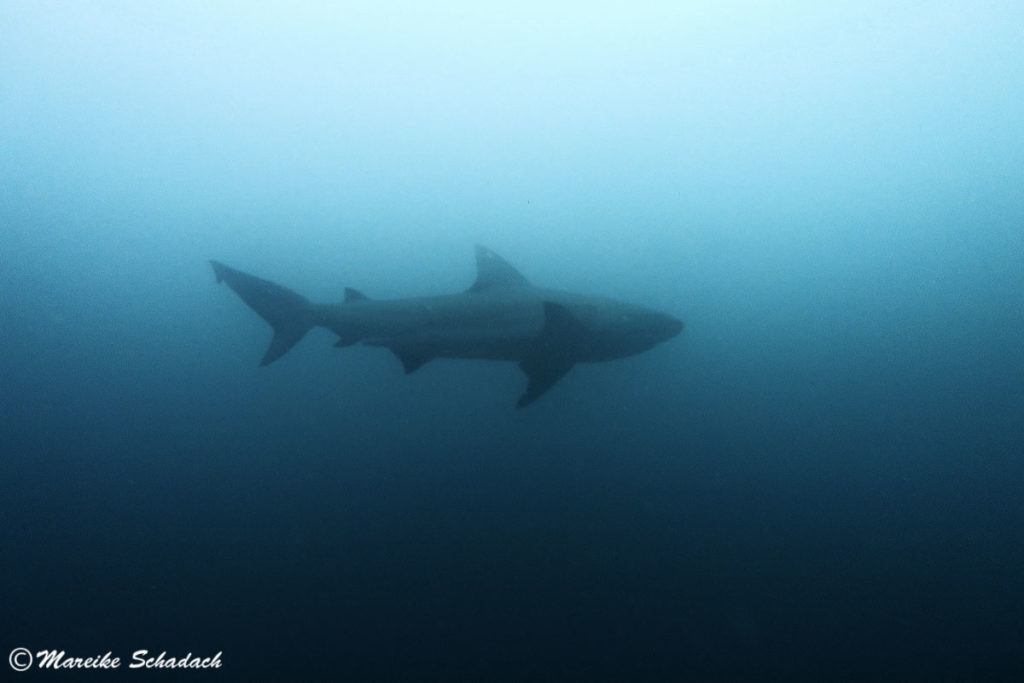
But unlike me, the sharks seem to already know about encounters between humans and sharks. They are not impressed by us. They calmly circle around the wreck. I am slowly getting calmer and am happy that the sharks are always coming closer. The mighty animals swim up to about three meters towards us. For a moment, I can even spot three sharks at once.
What an experience! I will never forget this dive for the rest of my life. Because this encounter has redefined my image of sharks. And it has ignited my desire for further shark dives. This encounter left me with a deep feeling of respect and an even deeper feeling of love.
Shark Diving in Cabo Pulmo National Park, Mexico
In the National Park Cabo Pulmo , you can see different kinds of sharks with a little luck. Some of them live here all year round, others are only seen occasionally. We had some luck and saw besides the bull sharks also a whitetip reef shark.
- Bull Shark(Carcharhinus leucas)
- Nurse Shark (Ginglymostoma cirratum)
- Lemon Shark (Negaprion brevirostris)
- Silky Shark (Carcharhinus falciformis)
- Galapagos Shark (Carcharhinus galapaguensis)
- Tiger Shark (Galeocerdo Cuvier)
- Blacktip Shark (Carcharhinus limbatus)
- Whitetip Reef Shark (Triaenodon obesus)
- Dog Shark (Heterodontus francisci)
- Whale Shark (Rhincodon typus)
Source: Cabo Pulmo Watersports
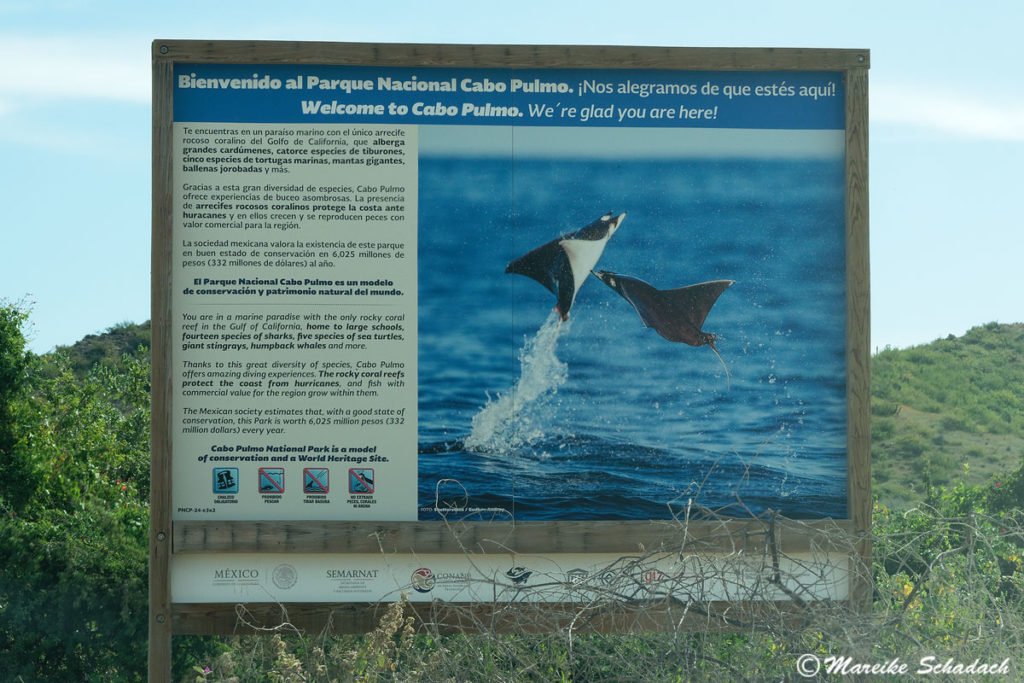
Bull sharks stay in Cabo Pulmo all year round. Depending on the time of year you dive, you can watch the sharks mating, resting or hunting. The sharks can be found at different dive sites in the national park. However, the wreck "El Vencedor" is the spot with the highest probability of sightings. During the winter season from December to April it is also possible to see the animals from the boat. Because then they come in large numbers close to the flat coast.
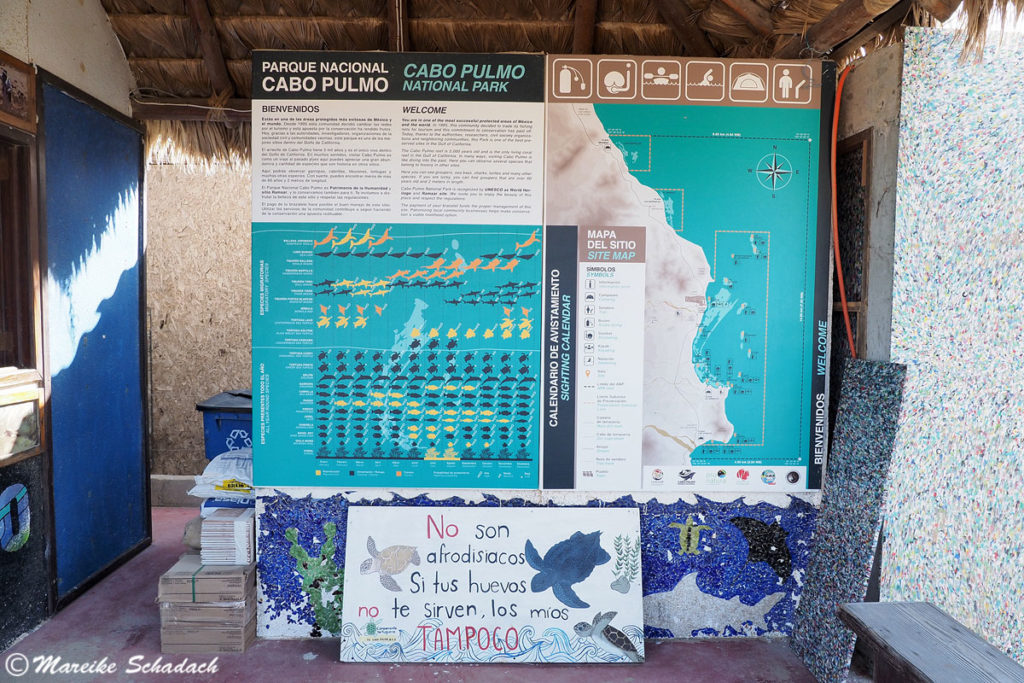
In the waters of Cabo Pulmo there is more than enough natural food for the sharks thanks to the fishing ban. All shark feeding is prohibited in the entire national park. The bull sharks therefore do not associate divers with food. They are relaxed and slightly curious.

Shark Diving - the Pros and Cons
The dive with the bull sharks in Mexico caused a lot of different emotions in me. First of all there is the fascination for the animals and a deep respect. But right next to the respect there is also a spark of fear. Most of the time this is overlaid by curiosity, a thirst for adventure and the desire for special nature experiences. But while I was reading more about the bull sharks of Cabo Pulmo and shark diving, questions arose in my head that demanded answers:
What are the differences in shark diving?
How safe is shark diving?
What is the controversial subject of shark feeding?
What are the general tips for shark diving?
What are the differences in shark diving?
Shark dive operators are easy to find on the internet these days. Different types of dives can be distinguished:
- Natural shark encounters at regional or seasonal shark collections
- Provoked Shark Encounters with fed sharks (with open or closed bait)
For the Natural Shark Encounters, you need a bit of luck and maybe a second or third try until you see a shark. You will be rewarded with an authentic nature experience. You will experience the shark in its natural behaviour. This is the most tolerable, respectful and safe way to conduct a shark dive.

In many diving areas, however, shark encounters are only made possible by feeding. A distinction must be made between feeding with open and closed baits. Closed means that the bait is in a box and the shark is only attracted by the smell. With open bait the fish pieces swim freely in the water. So with the so called "chumming" sharks are lured in front of the camera lens. The chances of a close encounter with a shark and an adrenaline-fuelled nature experience increase up to 100%. Business with sharks is booming and becoming more and more popular. However, the topic of shark feeding is highly controversial and involves risks.
How safe is shark diving?
Accidents with sharks happen. They are listed in the International Shark Attack Files of the Florida Museum of Natural History. For 2018, 66 "unprovoked" and 34 "provoked" attacks were reported worldwide. Five of the attacks were fatal, including one provoked attack. Of the attacks, 5% were targeted at divers, 6% at snorkelers and freedivers. The figures for 2018 are below the five-year average. They reflect the decline in shark populations due to overfishing and habitat loss. (Source: Florida Museum of Natural History)
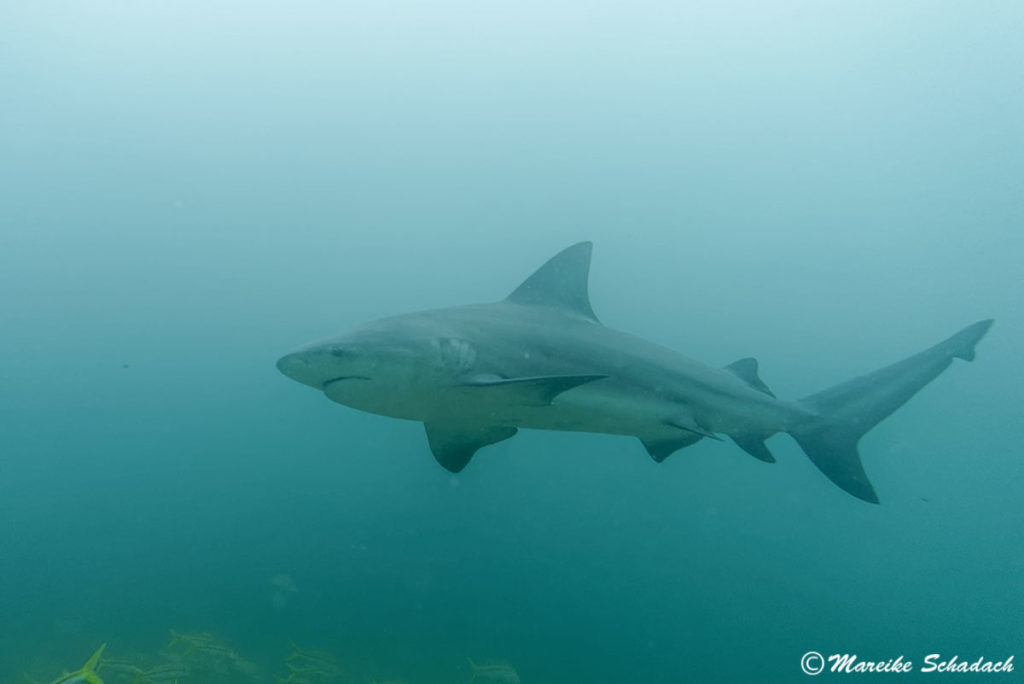
Sharks are not aggressive by nature. How else would it be possible to see pictures of divers with big sharks again and again? Apparently not every diver is bitten or eaten by the shark. This is also confirmed by the relatively low number of "unprovoked" shark attacks. However, there is a risk that the body size of humans is the same as that of prey of larger sharks. Since sharks have no possibility to analyse a diver more precisely, they cannot exclude us as prey. If the inhibition threshold of the normally rather shy animal is low enough at the same time, a "test bite" can occur. Because only through the sense of taste can the shark determine whether a diver is a possible prey or not.
However, the biggest risk factor in shark dives are human beings. This is because by frequently feeding the sharks, humans provoke a change in their behaviour: they come closer, compete for food and possibly regard divers as food competitors. Sharks often push and jostle divers. A wrong behaviour can quickly lead to a dangerous situation. In addition, sharks will associate divers with food in the future. What if such an animal develops expectations?
What is the controversial subject of shark feeding?
The development of shark feeding to promote shark tourism is hotly debated and seen ambivalently.
One opinion is: Shark feedings promote shark protection.
Another opinion is: Shark feeding changes the natural behaviour of the animal and can provoke accidents.
Shark feeding brings diving guests and they bring the money. A lot of money! 80 million dollars per year in the Bahamas alone. And where sharks become a lucrative, long-term source of income, the risk of them ending up on your plate or in your soup pot is reduced. With their underwater photos and adventure stories the diving guests advertise the sharks and help the animals to get a new image. At least as long as nothing happens!
I have decided that I will only participate in shark dives where the sharks are not fed. I would like to experience these majestic animals as naturally as possible. And there are enough regional or seasonal shark collections where encounters are possible. For me, a provoked shark encounter is no longer an authentic nature experience, but rather a risky circus spectacle to satisfy the diver's ego (science and professional camera work excluded).

Tips for your Shark Dive for more Safety
To make your shark dive as safe as possible, you should follow a few rules:
- Find out about the dive, local conditions and sharks in advance.
- Breathe calmly, quietly and regularly.
- Avoid fast, hectic movements. If the shark comes too close, take a vertical position. Do not swim away! This could be interpreted as easy prey.
- Shark dives require calm and controlled behaviour. This applies to breathing, buoyancy and all movements, including handling the camera. Shark dives are therefore rather something for experienced divers.
- Wear dark colors. Avoids strong contrasts and flashing equipment (confusion with loose scales of an injured fish).
- Try to keep present animals in view. If a shark circles you, turn with calm movements. This will help you to recognize changes in behavior more quickly or to balance any bumping into the shark.
- If you approach the shark from the side, do not appear directly above it. Make sure that there is a minimum distance of two body lengths. Do not harass the animal, especially in caves or wrecks.
- Make it look like schooling fish and use group safety. Especially when feeding on sharks.
- Never stand between shark and its potential prey or in the current area of the bait. Avoid fishing spots and the proximity of spearfishers.
- In shark-rich waters, it is better not to dive at dusk or in poor visibility conditions.
- Sometimes sharks show great interest for camera equipment. Because they can sense the electrical voltage of the equipment. If a shark gets too intrusive, better switch off your camera.
- Do not flash directly into the shark's eyes.
- Follow the instructions of the dive guide and don't get cocky. Any imprudent behaviour while shark diving is negligent and can quickly lead to a dangerous situation.
- Last but not least: If you are not comfortable with the conditions of the planned shark dive - drop the dive! There will certainly be another opportunity for a great shark dive.
Bull Sharks - feared, hunted, protected and loved
The bull shark (Carcharhinus leucas) or also common ground shark owes its name to its brawny physique. It appears strong and stocky and has a relatively broad snout. An important distinguishing feature, apart from its body type, is its almost right-angled dorsal fin and the lack of an interdorsal ridge between the front and rear dorsal fins. His eyes are comparatively small and appear rigid.
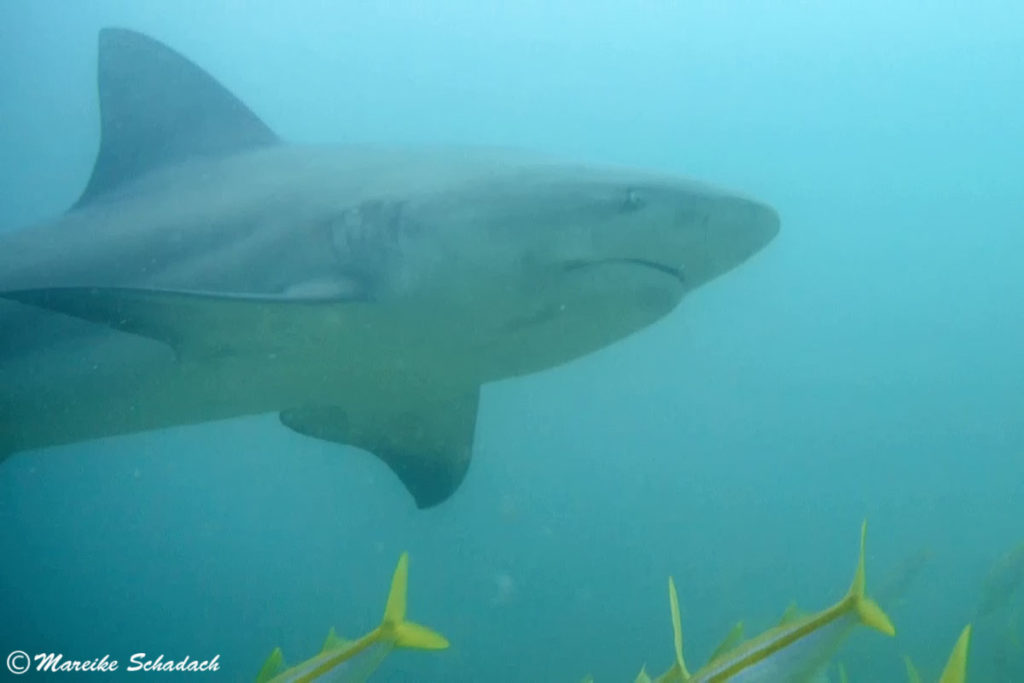
Bull sharks live in warmer coastal waters of the tropics and subtropics. It occurs in all seas except the Red Sea and the Mediterranean. It likes to stay close to the bottom over sandy ground and in murky waters. It is particularly common in shallow water near the shore and in the estuary of rivers. Bull sharks often penetrate rivers or even lakes. This is because, unlike other sharks, they are capable of regulating osmosis. This means they can adapt their metabolism for life in fresh water.
- Weight: up to 230 kg
- Length: up to 330 cm (young animals approx. 70 cm)
- Average life expectancy: 16-18 years
- Gestation: 10 to 11 months
- Litter size: 1 to 13 live born baby sharks
- Sexual maturity: with 10-12 years
- Swimming speed: up to 20 km/h
Bull sharks hunt day and night. They feed on fish, crabs, turtles and molluscs. It even eats other sharks and, if need be, even conspecifics. Humans are usually not on its menu. Nevertheless, the bull shark is one of the shark species that can also be dangerous to humans. Together with the tiger shark and the great white shark, it is one of the three most dangerous shark species.
More than 70 shark species are already on the IUCN Red List. The bull shark is also on the list. It is not threatened with extinction and is considered "only" to be at low risk (NT, Near Threatened). It is endangered by commercial fishing and sport fishing, because it can unfortunately continue to be hunted. Since the bull shark is often found in coastal waters, it is also an easy prey. Sharks also often die as by-catch in fishing nets.
So you can do something for Shark Protection yourself
Keep your eyes open when you buy fish. Do not buy "fantasy fish". Shark products are hidden behind the names "Schillerlocken", "Seeaal", "Kalbsfisch", "Seestör", "Karbonadenfisch" and "Königsaal" . Pharmaceuticals and cosmetics may also contain shark products, such as shark cartilage (collagen) or liver oil (squalene).
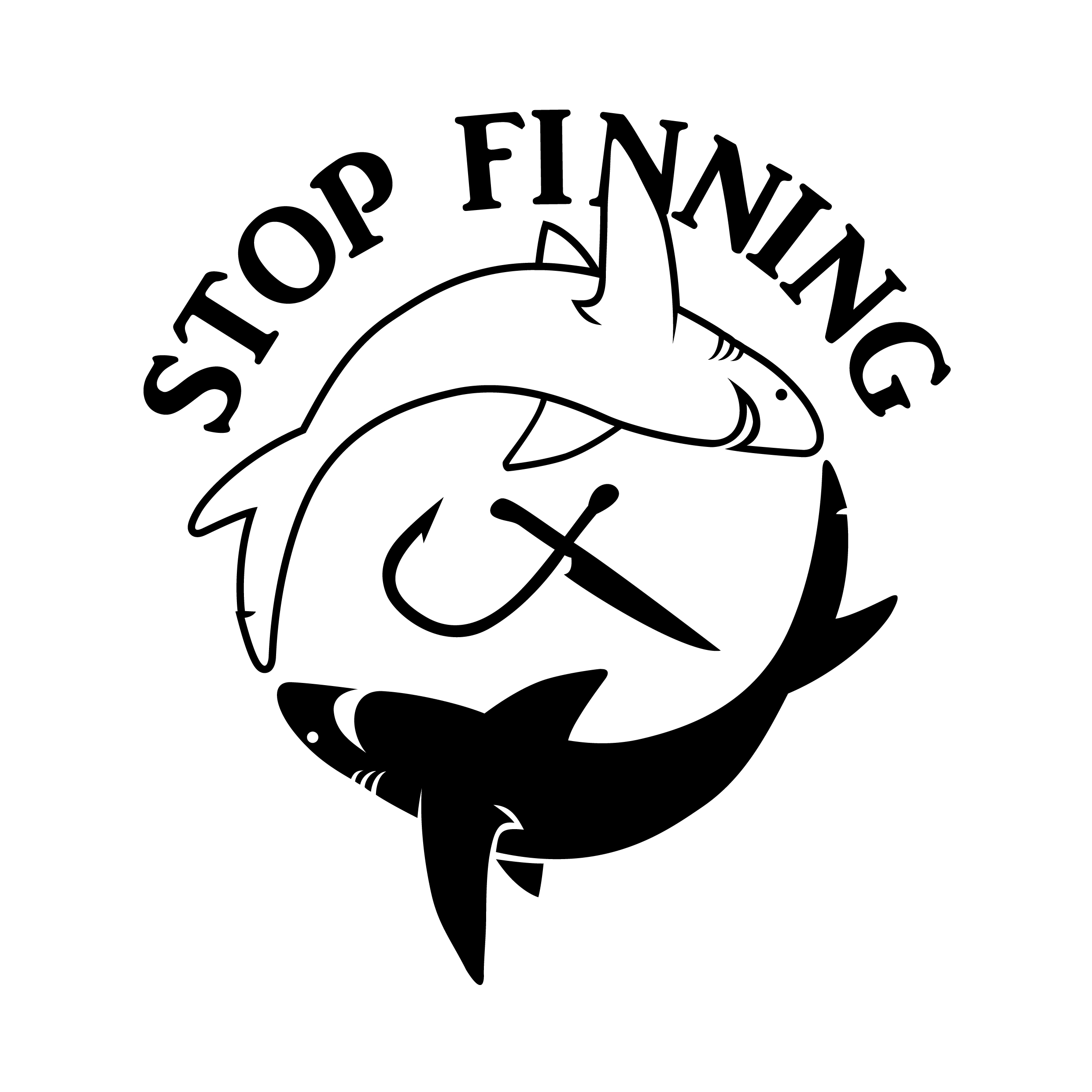
Stopp Finning!
Shark fins are considered a "delicacy" in many countries. Live sharks are often cut off the fins. The mutilated animals are then disposed of as waste overboard and are delivered to an agonizing death.
Here to find out more about it.
Book Recommendations for Mexico
You want to know where the journey goes? Then I can recommend these books* about Mexico.
You can order the books at Amazon by clicking on the pictures. If you buy a product through one of these affiliate links, I get a small commission and you help me to keep filling Fernweh-Motive with interesting articles. The product will not be more expensive for you and you do me a huge favor.
Have you ever been diving with sharks? Where was it and how did you like it? Do you have any questions or further tips for diving with bull sharks in Cabo Pulmo? If yes, then write me a comment!
Do you want to know when there are new articles on my blog? Then follow me on Facebook, Pinterest or Instagram. I would also be very happy if you share my article with your friends.
Further Encounters with Sharks

"Snorkeling in La Jolla - the best Tips" - Here you can snorkel with leopard sharks.
